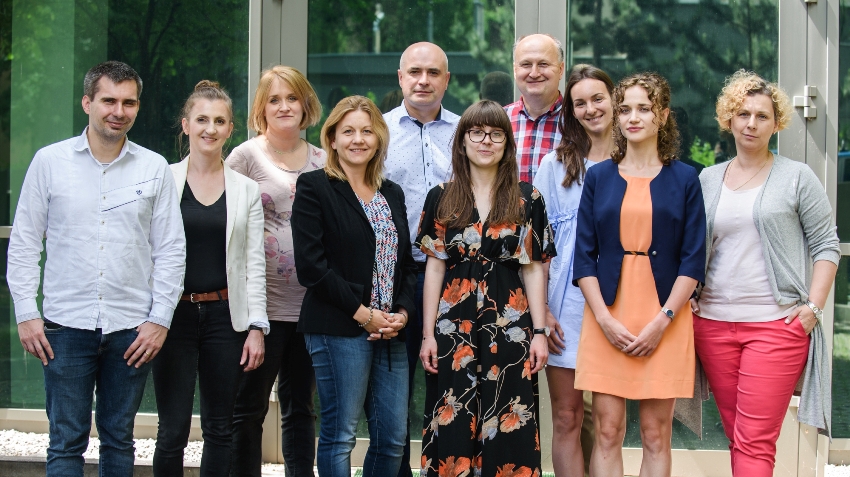Home » Research » Research groups »
Characteristics of materials after plastic deformation
The research work focuses mainly on the processes of severe plastic deformation and the accompanying effects of microstructure and properties changes.
The research includes evolution of texture, microstructure and residual stresses as well as phase composition. Research is also carried out on the influence of severe plastic deformation on thermal stability of microstructure and mechanical properties (including instability of plastic deformation – Portevin-Le Chatelier effect) and description of degradation processes.
Research activities
- The influence of severe plastic deformation on corrosion resistance of Al-Mg alloys
- The influence of severe plastic deformation on the microstructure and mechanical properties of aluminum alloys
- Corrosion tests of Mg-Li alloys after plastic deformation
- Analysis of phase transformations, microstructure and mechanical properties of duplex steels after severe plastic deformation and heat treatment processes
- The influence of plastic deformation on the evolution of the microstructure of single crystals and polycrystals with different stacking fault energy (SFE)
- Texture development in single crystals and polycrystals after plastic deformation
- Thermal stability of polycrystalline materials after severe plastic deformation
-
Development of technological guidelines for obtaining copper substrates with a developed surface for photovoltaic applications
Research offer
- Elemental analysis using wavelength dispersive X-ray fluorescence spectrometry (WDXRF)
- Phase composition, measurements of residual stress, texture and thin layers analysis using X-ray diffraction
- Microstructure observations - scanning electron microscopy (SEM), transmission electron microscopy (TEM) and identification of crystalline materials using the electron back scattered diffraction (EBSD) technique
-
Electrochemical and stress corrosion resistance tests
Projects
- Technologies of semiconductor materials for high power and high frequency electronics, NCBR, TECHMATSTRATEG1/346922/4/NCBR/2017
- The influence of orientation of single crystals with different stacking fault energy on deformation texture formation during drawing, NCN, OPUS, 2016/21/B/ST8/01183
- Light installation development for delivery vehicles, NCBR, Industrial research project NCBR
-
New generation of cantilever system dedicated for lightweight railway and tramway overhead traction lines
Research collaboration
- Faculty of Mechanical Engineering, Lodz University of Technology, Lodz
- Faculty of Materials Engineering and Metallurgy, Silesian University of Technology, Katowice
- Faculty of Non-Ferrous Metals, AGH University of Science and Technology, Krakow
- Faculty of Microsystem Electronics and Photonics, Wroclaw University of Science and Technology, Wroclaw
- Institute for Ferrous Metallurgy, Gliwice
- Institute of Non-Ferrous Metals, Gliwice
- Institute of High Pressure Physics, Polish Academy of Sciences, Warsaw
- Institute of Fundamental Technological Research, Polish Academy of Sciences, Warsaw
- Institute of Precision Mechanics, Warsaw
- Faculty of Mechanical and Electrical Engineering, Polish Naval Academy, Gdynia
- Institut Nationale des Sciences Appliquees, Lyon, France
- Ecole des Mines de Saint-Etienne, France
-
Vysoka Skola Banska – Technicka Univerzita Ostrava, Czech Republic
Contact
Professor Jarosław Mizera
jaroslaw.mizera@pw.edu.pl
+48 22 234 87 29
Division of Materials Design

